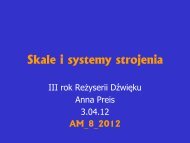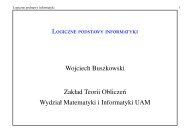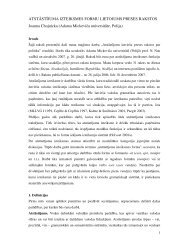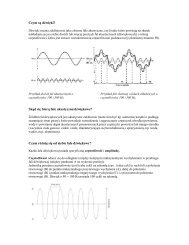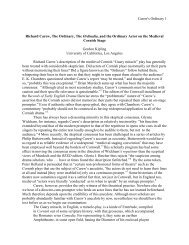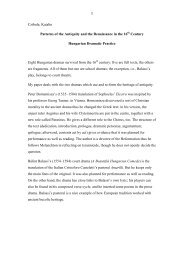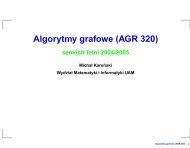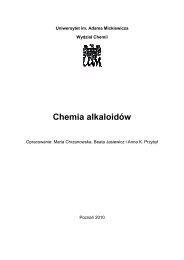Amir Weiner Getting to Know You
Amir Weiner Getting to Know You
Amir Weiner Getting to Know You
Create successful ePaper yourself
Turn your PDF publications into a flip-book with our unique Google optimized e-Paper software.
16 AMIR WEINER AND AIGI RAHI-TAMM<br />
Ukraine and Belorussia with a pho<strong>to</strong> agency, given its constant requests for<br />
more pho<strong>to</strong> paper and equipment. Failing <strong>to</strong> register for a passport with the<br />
local militia was ruled a criminal offense. As a result, between January and<br />
early March 1940, 1,758,000 people (out of an estimated 4 million) in the<br />
cities and district centers of western Ukraine were issued passports. Tellingly,<br />
the NKVD already credited passportization with the creation of a pool of<br />
nearly 15,000 people with compromising material, a figure that more than<br />
doubled a month later. 37<br />
Local archives emerged as a key <strong>to</strong>ol in the information-gathering<br />
enterprise. Here, <strong>to</strong>o, the Soviets brought along two decades of expertise in<br />
utilizing largely professional archives for their social and political engineering<br />
drive. Inside the pre-1939 borders, archives had long been employed<br />
<strong>to</strong> support the task of cleansing society of “alien elements.” As early as<br />
April 1918, a special committee in the Petrograd Archive of His<strong>to</strong>ry and<br />
Revolution was charged with the compilation of compromising materials,<br />
a task that constantly expanded as the regime consolidated its grip on the<br />
country and launched a crash course in building socialism. Twenty years later,<br />
at the height of the terror, the NKVD claimed jurisdiction over the archival<br />
system, which it then used extensively in carrying out mass repressions, and<br />
on 21 September 1939, with the USSR’s westward expansion underway, it<br />
introduced the Soviet index-card recording of “politically tainted people.”<br />
Each card consisted of personal, professional, and political data as well as<br />
compromising information and its sources. All those recorded were entered<br />
in<strong>to</strong> reference lists in triplicate and immediately forwarded <strong>to</strong> the NKVD<br />
for operational use, its Soviet archives, and the direc<strong>to</strong>r of the organization’s<br />
archives. The archives were obliged <strong>to</strong> respond within 24 <strong>to</strong> 48 hours <strong>to</strong><br />
inquiries fielded by the police and the Party. 38<br />
Needless <strong>to</strong> say, the mayhem brought on by the occupations did not<br />
bode well for smooth implementation. In late 1939, an official at the Archival<br />
Department of the NKVD in L´viv reported <strong>to</strong> Moscow that many critically<br />
important archives were destroyed and almost all archives were damaged in<br />
one way or another. But the official did not blame the former Polish authorities<br />
who, he said, destroyed very little. Rather, it was the Red Army that did<br />
most of the damage. Quartered troops destroyed the archives of anti-Soviet<br />
movements and liquidated the archives of the command of the district Polish<br />
37 Derzhavnyi arkhiv Ministerstva vnutrishnikh sprav Ukraïny (DAMVSU) f. 3, op. 1, spr. 6,<br />
ark. 4–6, 12–15, 23–26, 45–48.<br />
38 V. E. Korneev and O. N. Kopylova, “Arkhivy na sluzhbe <strong>to</strong>talitarnogo gosudarstva (1918–<br />
nachalo 1940-kh gg.)” Otechestvennye arkhivy, no. 3 (1992): 13–20; Kopylova, “V poiskakh<br />
‘spetskar<strong>to</strong>tetki GAU NKVD SSSR’ ” Otechestvennye arkhivy, no. 1 (2000): 33–34.



